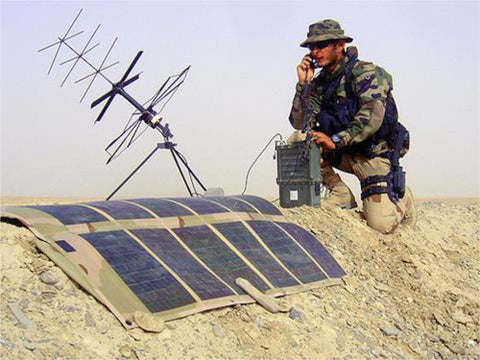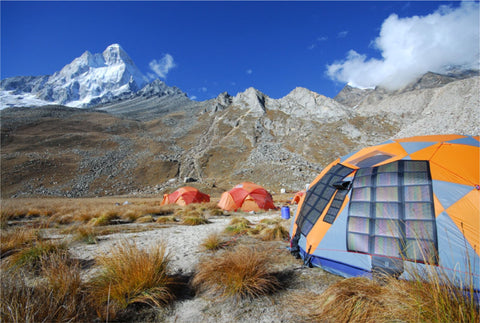Eight advantages and four disadvantages of CIGS thin-film solar panels
CIGS is the abbreviation of CuInxGa(1-x)Se2 for solar thin-film cells. It is mainly composed of Cu (copper), In (indium), Ga (gallium), and Se (selenium). It has strong light absorption ability, good power generation stability and conversion. It has the advantages of high efficiency, long power generation time during the day, high power generation, low production cost and short energy recovery period.

Eight advantages of GIGS thin film solar panels. details as follows:
- Low production cost Due to the low reaction temperature, it can be manufactured at a temperature of about 200C, so films can be deposited on substrates such as glass, stainless steel plates, aluminum foils, ceramic plates, polymers, etc., which is easy to achieve large-scale production and reduce costs.
- Less material consumption Amorphous silicon has a large light absorption coefficient, and the thickness of the silicon film can be extremely thin. For example, using single crystal silicon, to fully absorb sunlight, the required thickness is 180 ~ 200um; while using amorphous silicon, as long as 1μum is enough, and it does not need to be sliced like single crystal, and the waste of material is very small.
- The manufacturing process is simple and can be continuous, large-area, and automated mass production The main process of amorphous silicon solar cells using glass substrates is currently the plasma-enhanced chemical vapor deposition (PECVD) method. The production method has the characteristics of high automation and high production efficiency. This manufacturing process can be continuously completed in multiple vacuum deposition chambers or multiple wafers in one deposition chamber, thereby realizing mass production.
- The manufacturing process consumes less power and the energy repayment time is short
Amorphous silicon is prepared by PECVD method, the substrate temperature is only 200~250C, and the discharge power density required by the discharge electrode is low. Compared with the repeated melting of single crystal silicon above 1412C, much less power is consumed. The energy repayment time of crystalline silicon solar cells is 2-3 years, while the conversion efficiency of amorphous silicon solar cells with a conversion efficiency of 6% only takes 1-1.5 years
- Good high temperature performance
When the operating temperature of the solar cell is higher than the standard test temperature of 25C, its output power will decrease. For crystalline silicon cells, the output power decreases by about 0.5% for every 1C increase in temperature; while the temperature coefficient of thin-film cells is low, such as amorphous silicon solar cells only drop by 0.25%, so the output power is more affected by temperature than crystalline silicon solar cells. much smaller. For example, an IMW monocrystalline silicon cell photovoltaic power station, when the temperature of the solar cell reaches 65 ℃, the output power is only 800kW, and if a CdTe cell with the same power is used, at the same temperature, its output power is still 900kW.
- Good response to weak light and high charging efficiency
Due to the wide spectral response range of amorphous silicon cells in the entire visible light range, they have good adaptability to low light intensity in practical use, and can absorb scattered light. Compared with crystalline silicon solar cells of the same power, the power generation of amorphous silicon cells can be increased by about 10%.

- There is no internal circuit short circuit problem
Practical integrated thin-film solar cells have achieved high output voltage of cell interconnection in the process, avoiding reliability problems caused by interconnected packaging of crystalline silicon solar cell modules.
- It is suitable for building integration (BFV), and can be made into different light transmittance as needed to replace the glass curtain city: there can be a flexible battery with stainless steel or polymer as the base, which is suitable for the curved roof of buildings, etc. It can be used anywhere; it can also be made into a foldable power supply, which is easy to carry and can be used for mobile devices in the fields of small instrument computers and military communication GPS.

The main disadvantages of CIGS thin film solar panels are:
- The conversion efficiency is low Especially for large-scale production of amorphous silicon cell modules, the conversion efficiency is only about half of that of crystalline silicon cell modules.
- The area of the solar cell required for the same power increases Compared with crystalline silicon, it takes up a larger area when used, which will be limited when the installation space is limited, and the corresponding BOS system cost will also increase.
- Poor stability Due to the light-induced attenuation characteristics of amorphous silicon, the photoelectric conversion efficiency of amorphous silicon cells includes the phenomenon that the output gradually declines after strong illumination. This affects the application of this low-cost battery to a certain extent.
-
Large investment in fixed assets Because the manufacturing
process requires advanced special processing equipment, the requirements
for the production environment are relatively high, and it requires
high investment costs.

.png)
Comments
Post a Comment